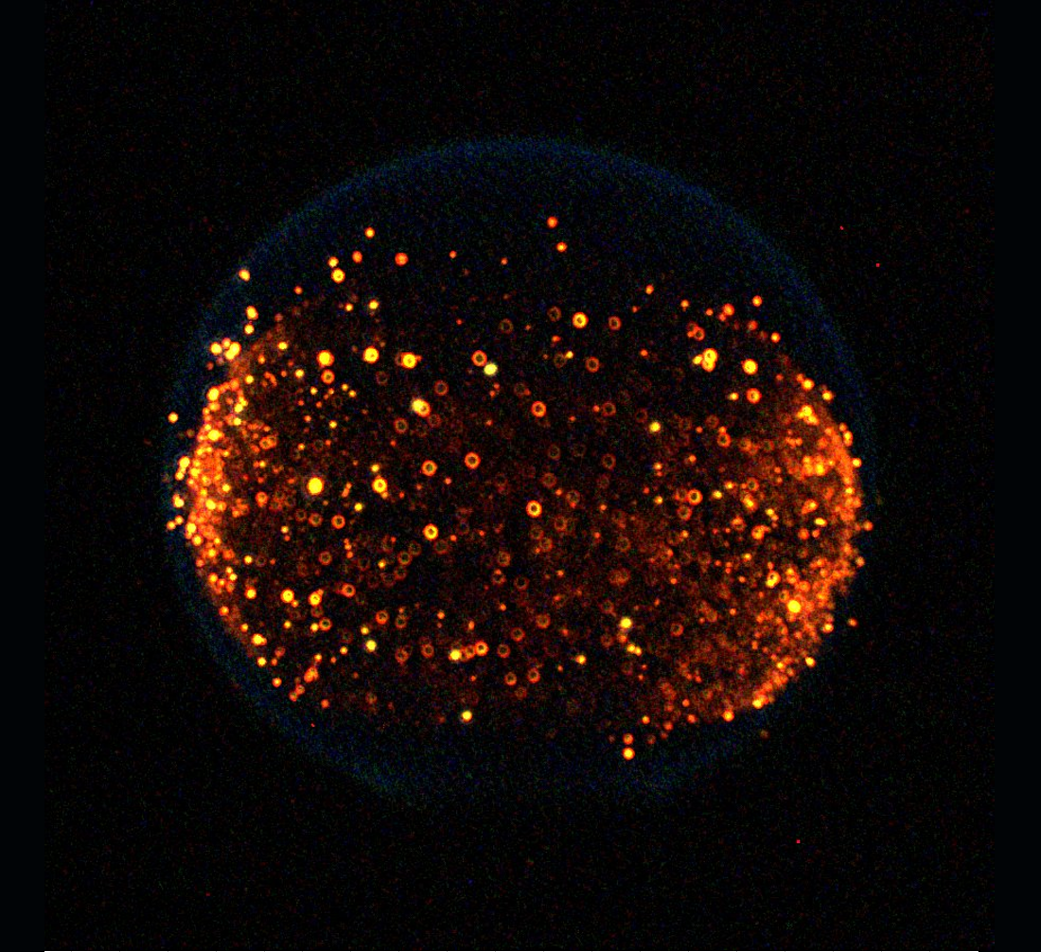This image from 2020 shows a flame that was one of many ignited as part of the Flame Design investigation inside of Combustion Integrated Rack (CIR) to investigate the amount of soot that is produced in different conditions. The yellow spots are soot clusters that glow yellow when hot. These clusters grow larger in microgravity than on Earth because the soot remains within the flame longer. The CIR was created and launched to the International Space Station in 2008.
NASA continues to study the behavior of fire in space.
Americans can feel safer in their homes now than decades ago thanks to studies and standards that have removed highly flammable materials in clothing, beds, and furniture. NASA relies on similar studies and standards to protect astronauts when selecting materials for spacesuits and spacecraft.
But fire behaves differently in space. Changes in gravity and air flow can alter the way it spreads and make it harder to extinguish.
The Solid Fuel Ignition and Extinction (SoFIE) project, a set of experiments that launched aboard Northrop Grumman’s 17th cargo resupply mission to the International Space Station, could light the way to a deeper understanding of fire in space. SoFIE will run in the station’s CIR, which features a chamber where experiments can burn safely. SoFIE will help NASA select materials and designs for spacesuits, cabins, and habitats. The experiments also will help NASA identify the best ways to put out fires or smoldering materials in space as it prepares to go farther and stay longer.
Image Credit: NASA
这张2020年的图像显示了作为燃烧集成机架(CIR)内部火焰设计调查的一部分点燃的众多火焰之一,以调查在不同条件下产生的烟尘量。黄色斑点是烟灰簇,在受热时会发出黄色光。这些星团在微重力下比在地球上长得更大,因为烟尘在火焰中停留的时间更长。 CIR于2008年建造并发射到国际空间站。
NASA将继续研究太空中火的行为。
由于研究和标准消除了衣服、床和家具中高度易燃的材料,美国人现在在家里比几十年前更有安全感。在选择宇航服和航天器的材料时,NASA依靠类似的研究和标准来保护宇航员。
但是火在太空中的表现不同。重力和气流的变化会改变它的传播方式,使其更难熄灭。
固体燃料点火与灭火(SoFIE)项目是诺斯罗普·格鲁曼公司向国际空间站进行的第17次货物再补给任务中发射的一组实验,它可能为深入了解太空火灾开辟道路。SoFIE将在空间站的CIR中运行,该CIR设有一个可以安全进行燃烧实验的腔室。SoFIE将帮助NASA为宇航服、舱和栖息地选择材料和设计。这些实验还将帮助NASA确定在太空灭火或阴燃材料的最佳方法,因为NASA将探索更远的地方,停留更长的时间。
影像来源:NASA







